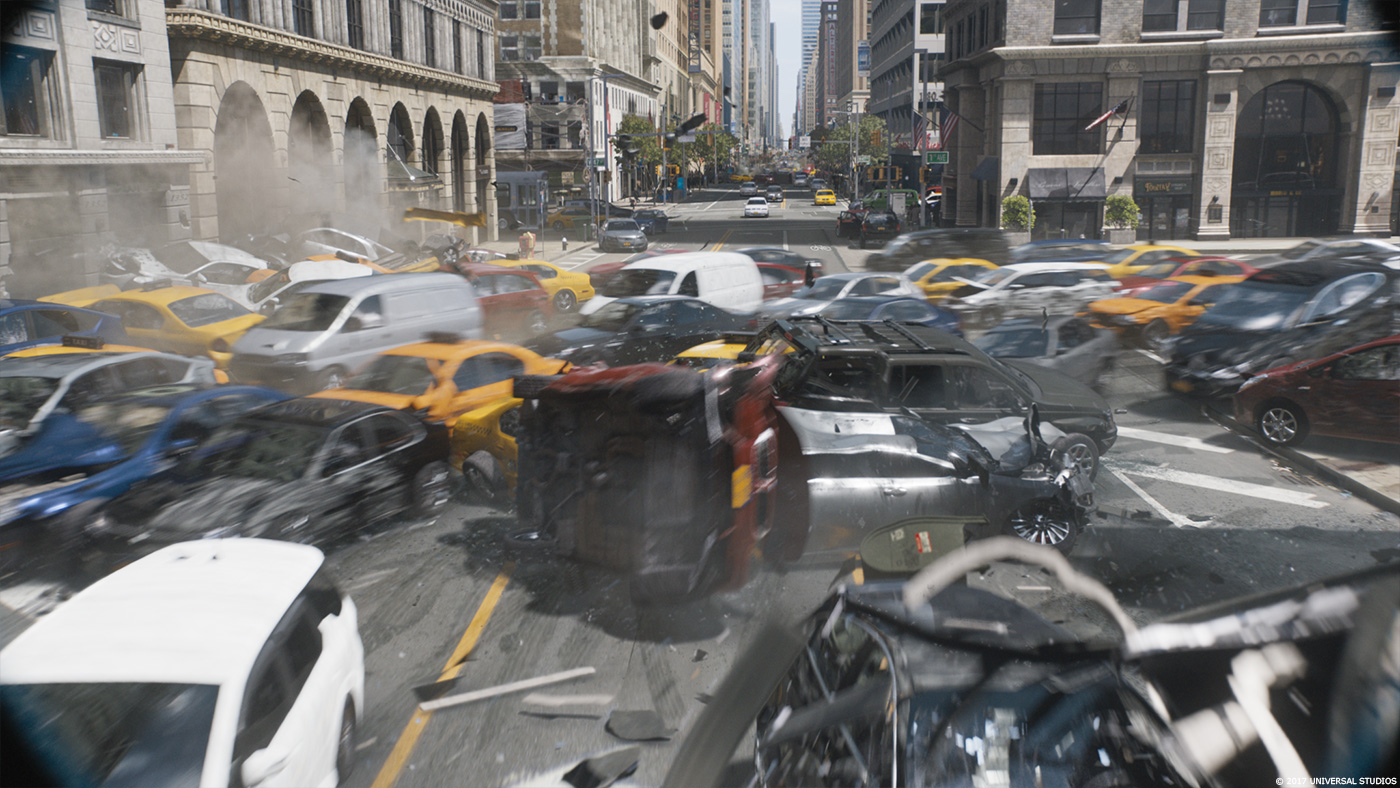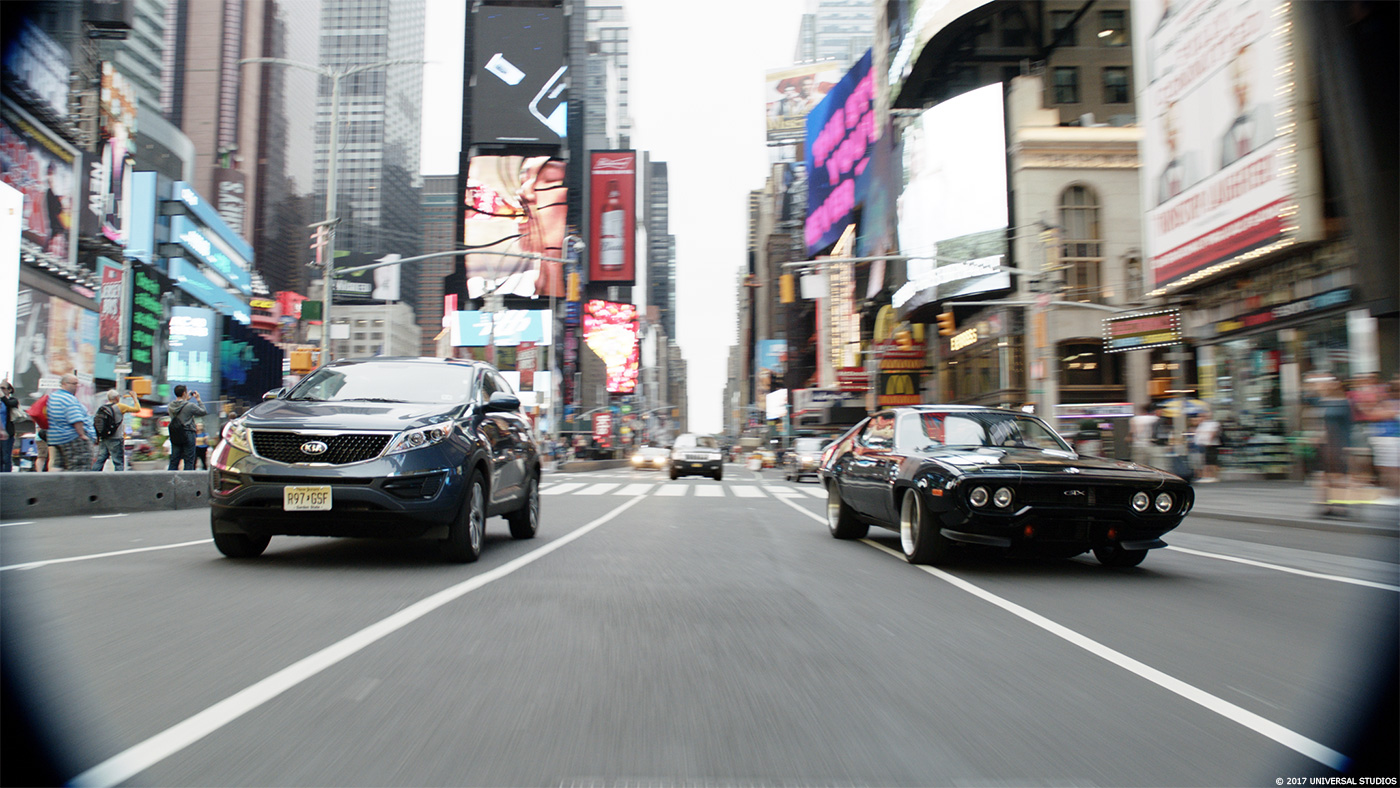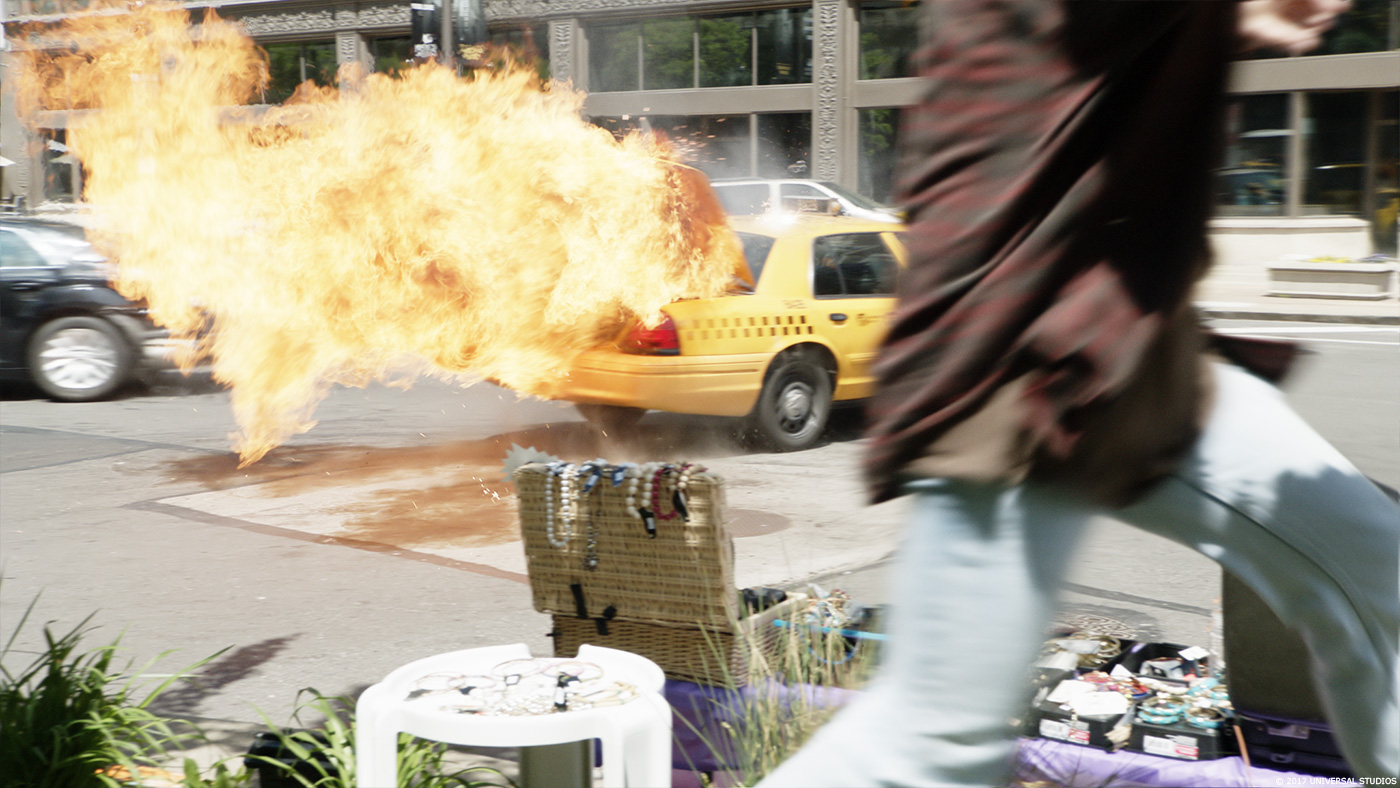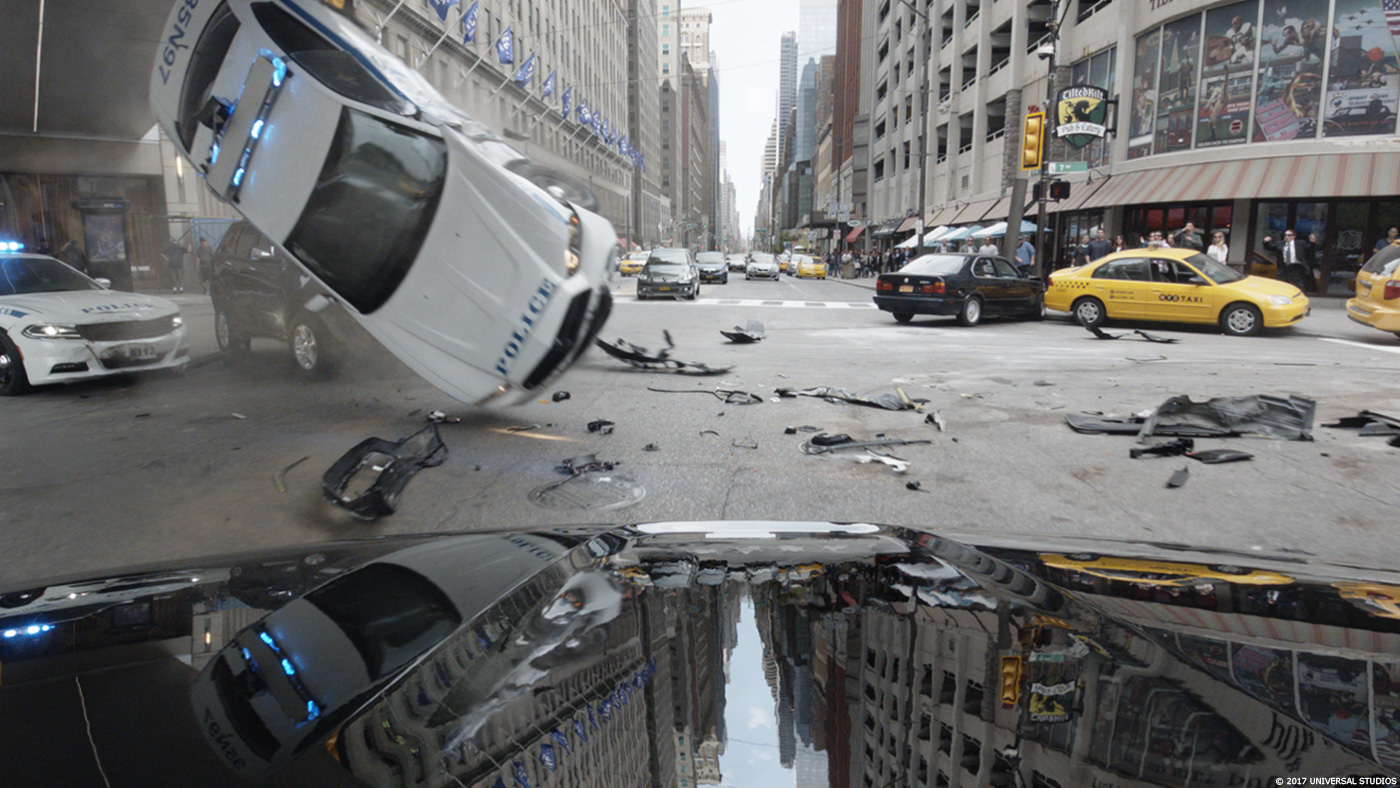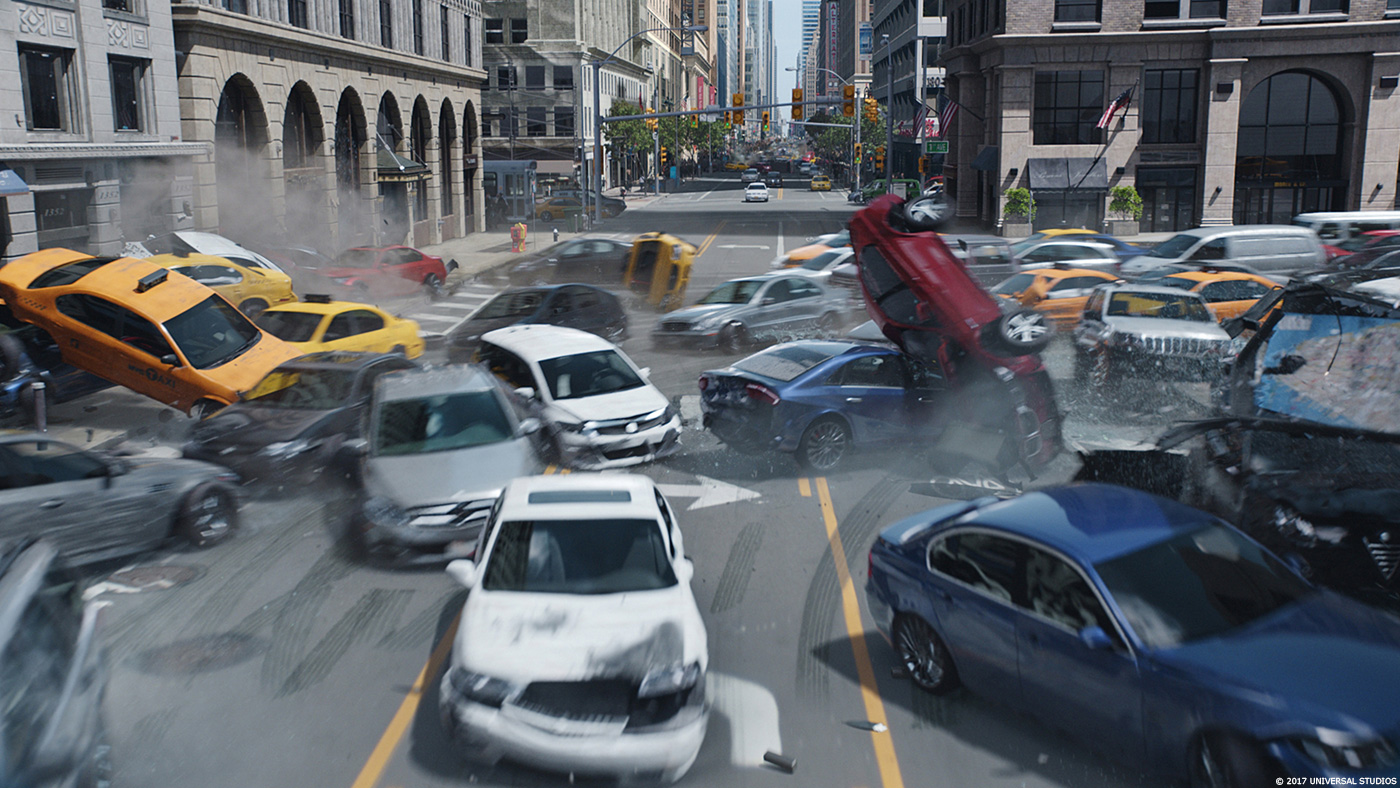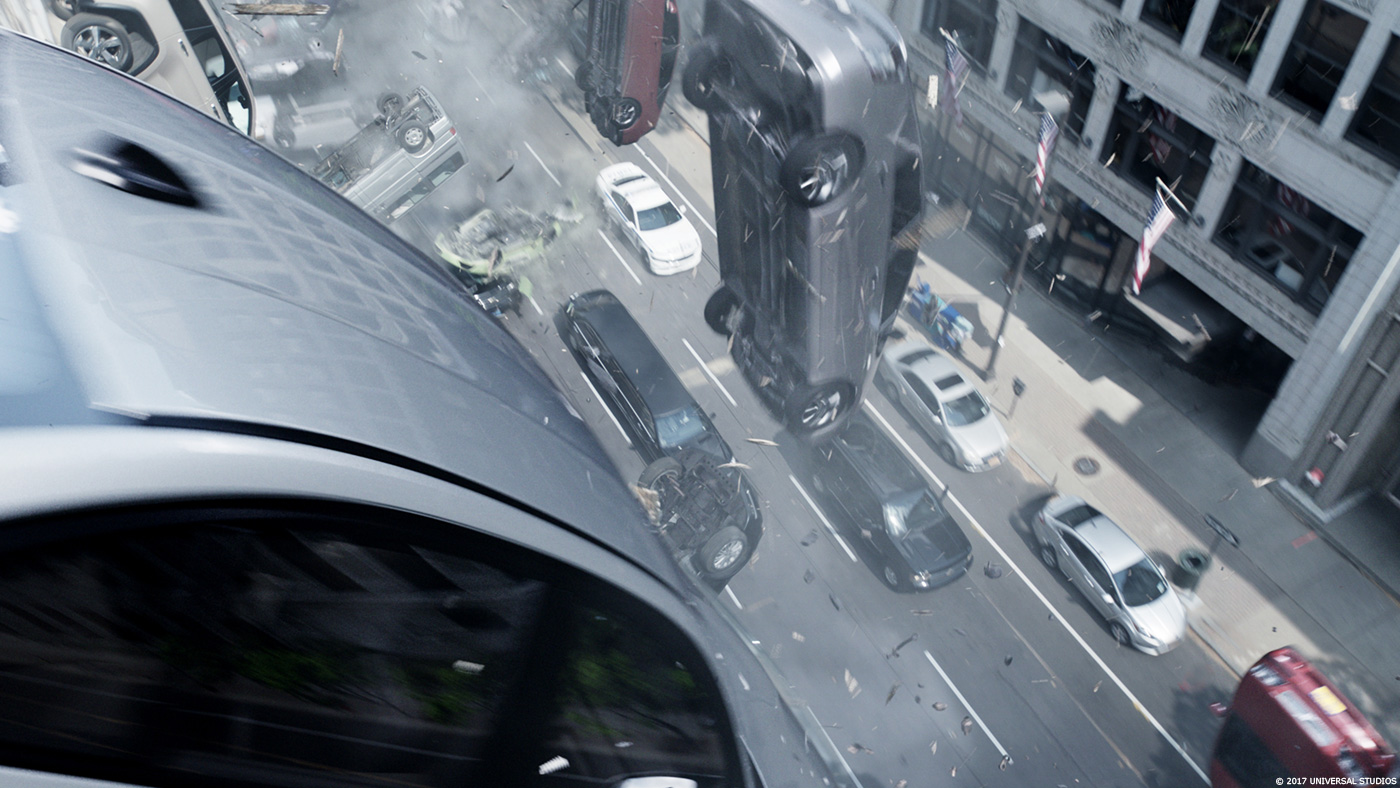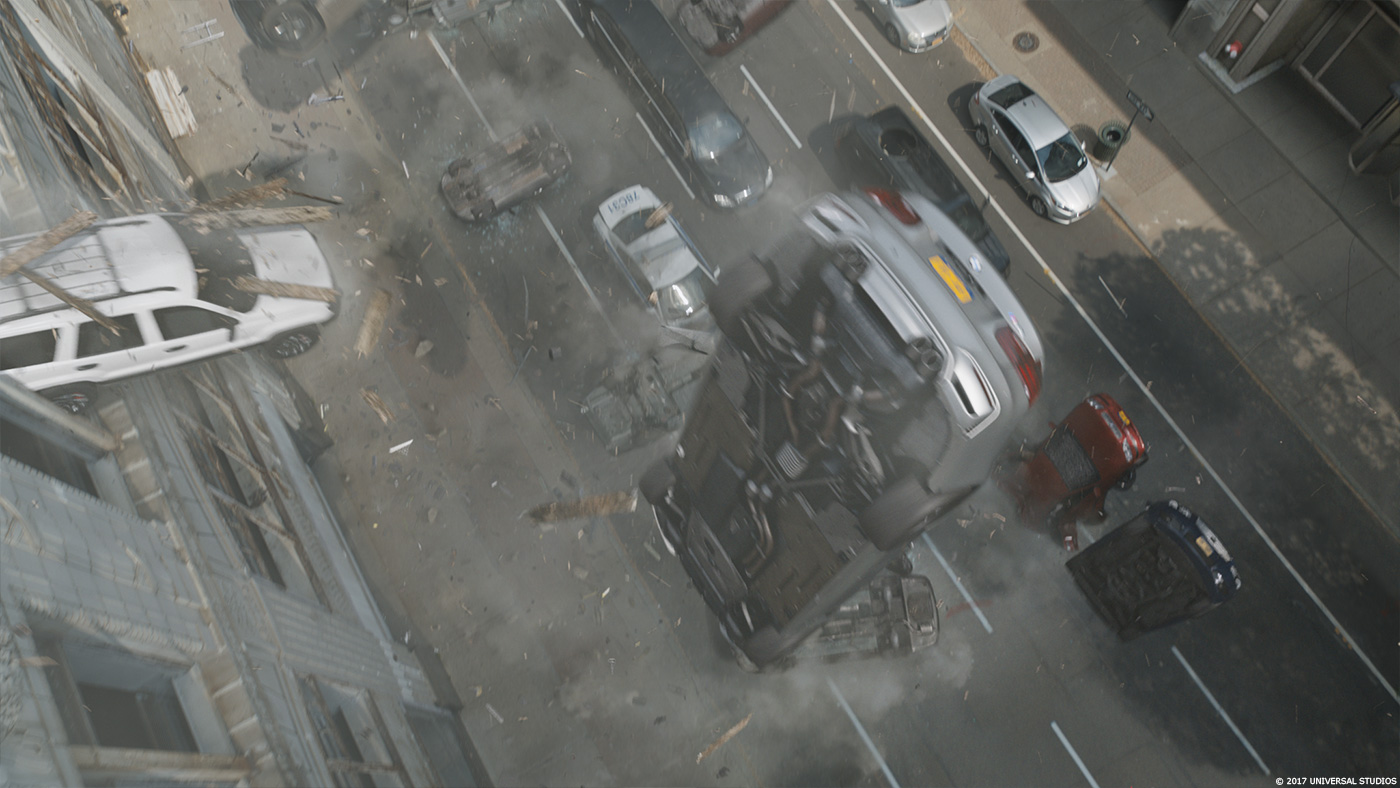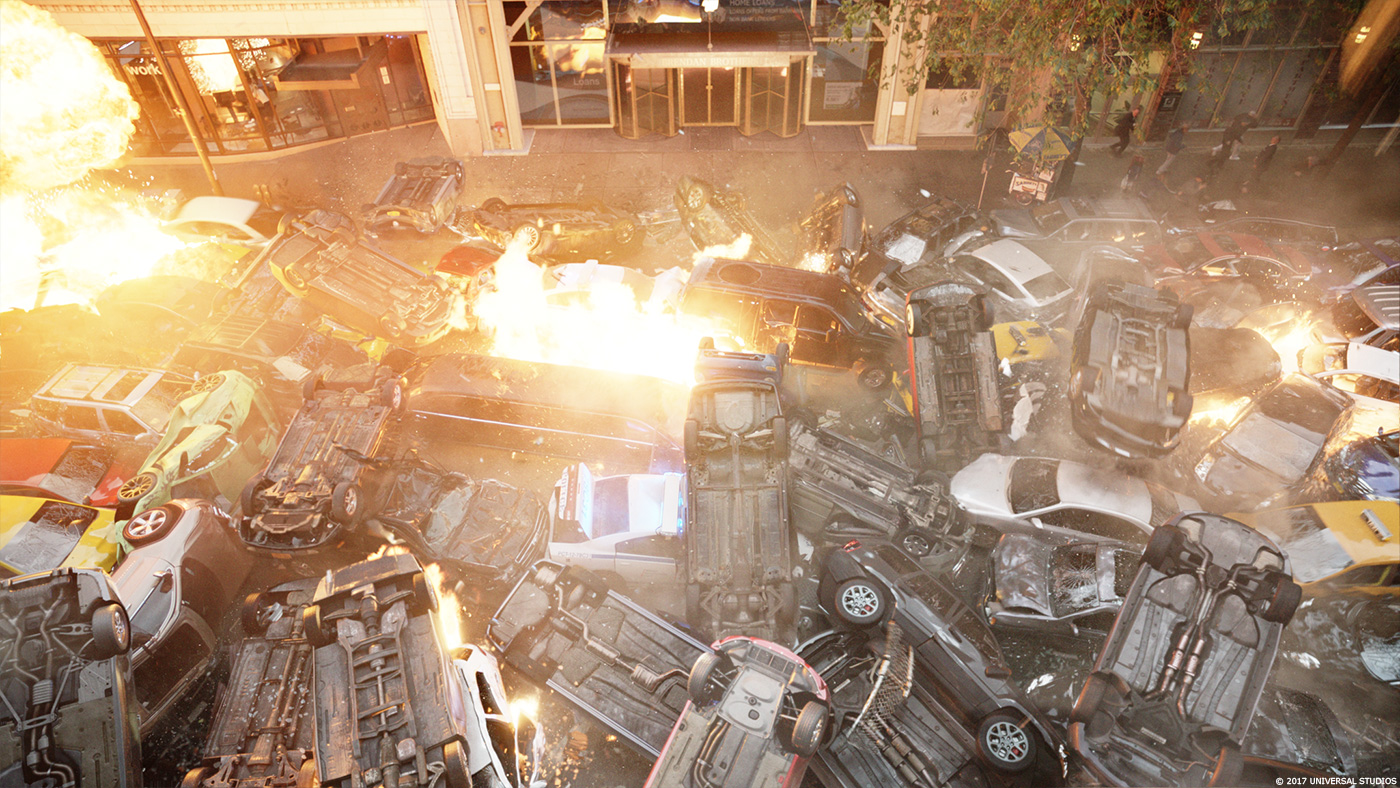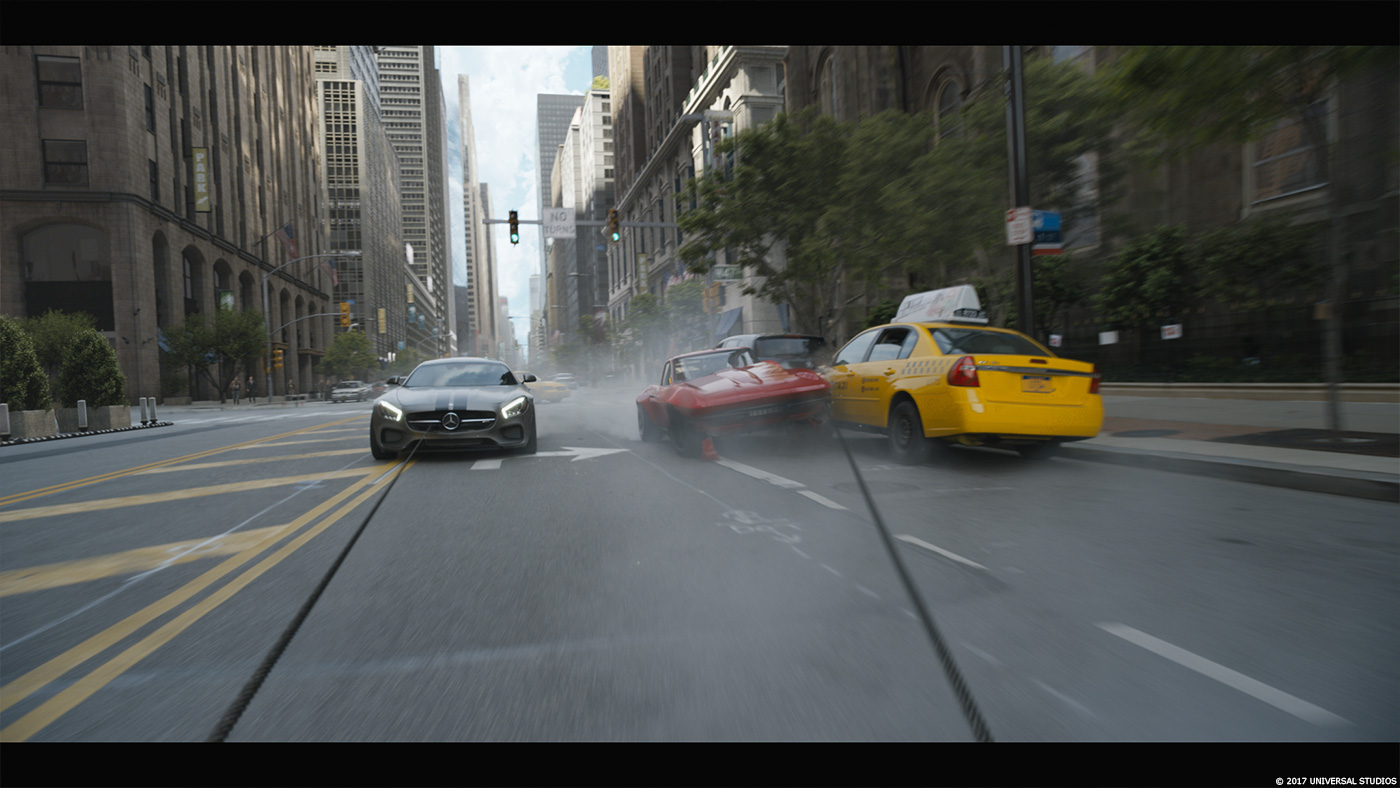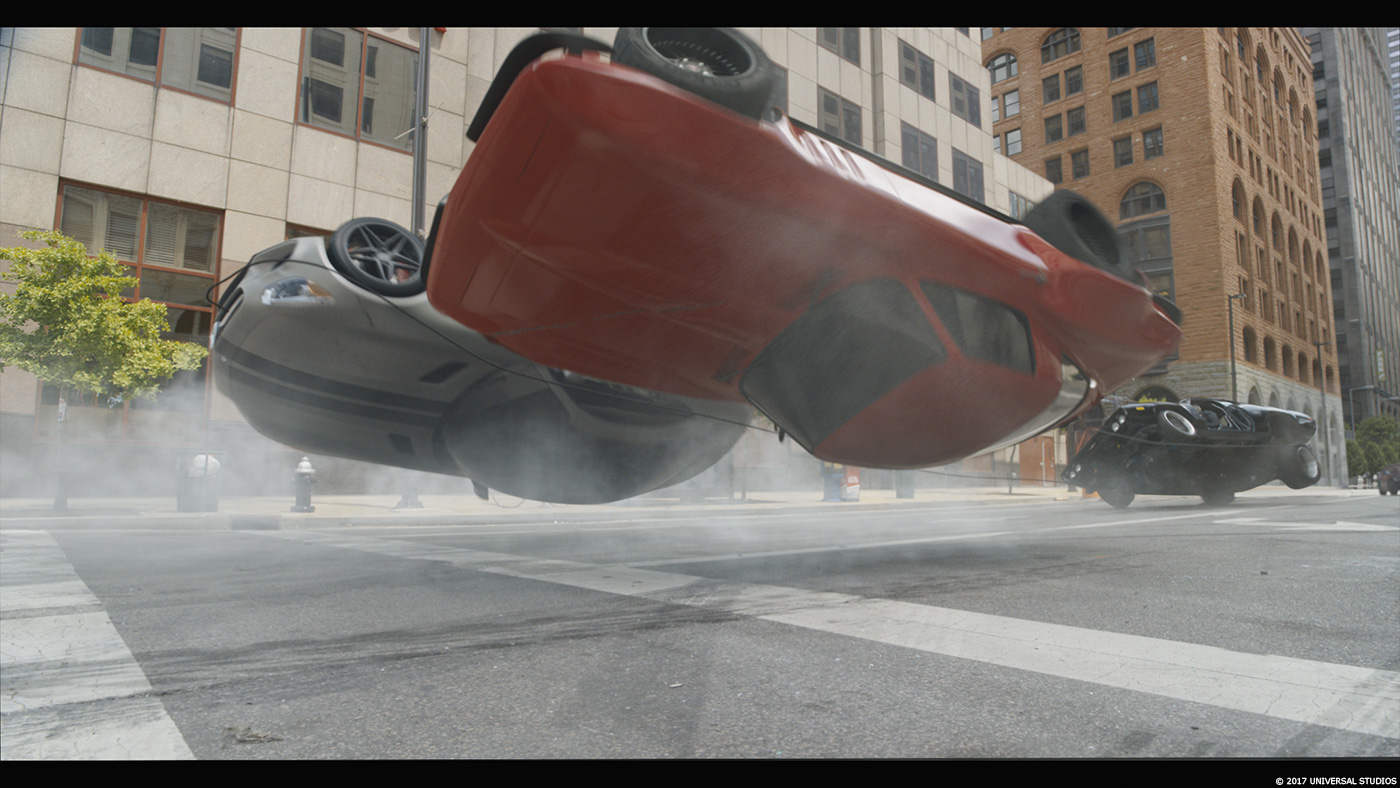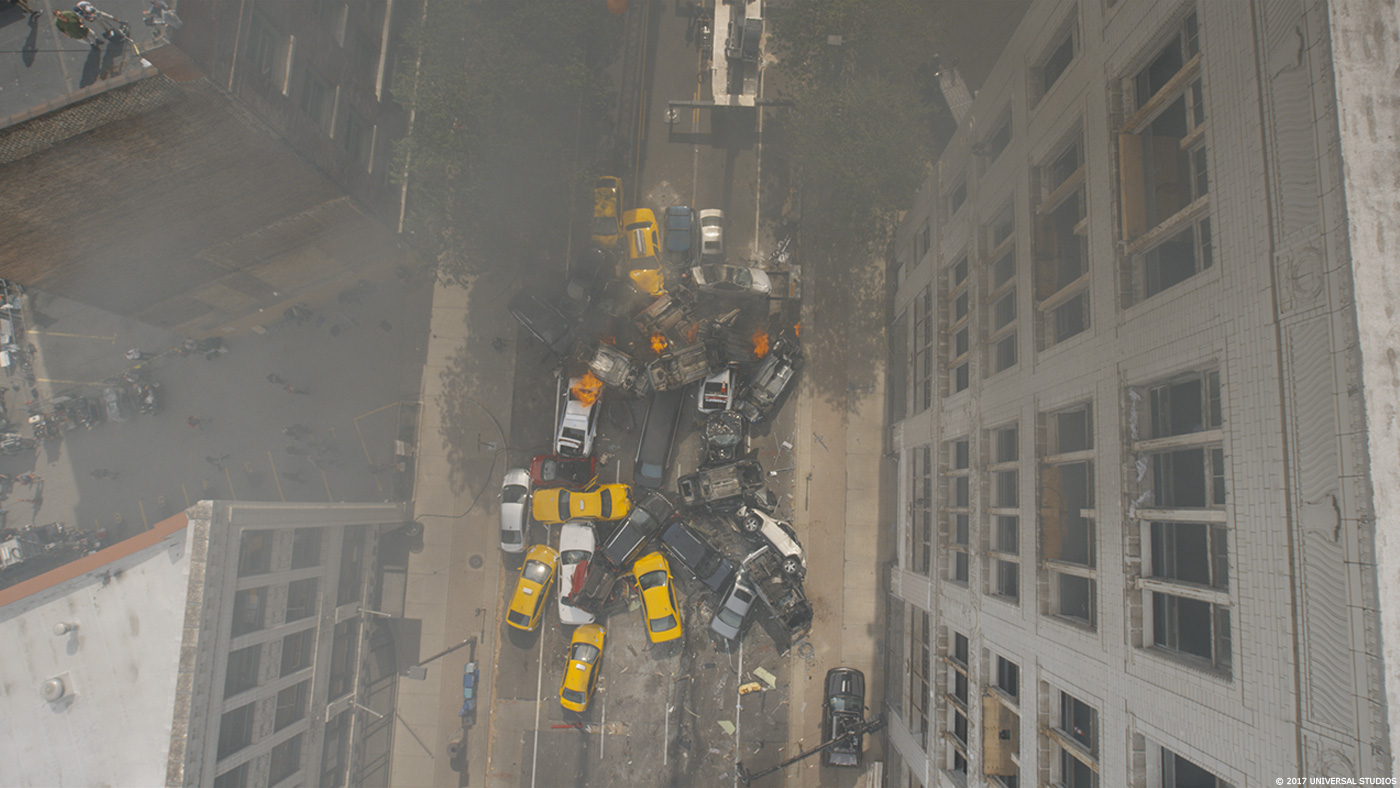Last year, Alex Wang explained to us about the work of Digital Domain on DEADPOOL. He then joined the teams of Double Negative and talks about his work on THE FATE OF THE FURIOUS.
How did you and Double Negative get involved on this show?
Double Negative have worked on a number of previous FAST AND FURIOUS films, so naturally it made sense for Dneg to be involved in THE FATE OF THE FURIOUS. Having worked on FURIOUS 7 myself, I was really excited to be involved with the eighth instalment.
How was the collaboration with director F. Gary Gray and VFX Supervisors Michael J. Wassel and Kelvin McIlwain?
It was a pleasure working with Gary, Mike and Kelvin. I spent a majority of my time on-set with Kelvin and second unit in Cleveland and NYC. Both Mike and Kelvin have a long history with the franchise so they really understood the creative process and expectations. They also created a very collaborative relationship throughout the entire project with us.
What were their approaches and expectations about the visual effects?
The FAST AND FURIOUS franchise prides itself on practical stunts and rightfully so as they have some of the best spfx and stunt men and women in the business working on the film. In post we always approached shots with a mindset of trying to keep as much of the original photography as possible. The visual effects had to always be along the same vein as the practical fx and grounded to reality, so that even when the action may be over the top (like a horde of 200 crashing cars!) we needed to be true to physics.
What are the sequences made by Double Negative?
We were responsible for the entire NYC sequence.
How did you organize the work at Double Negative?
The NYC sequence was one long continuous sequence, so we broke it down into smaller sub-sequences making it more manageable for our teams. We had artists, supervisors and production in both the Vancouver and Mumbai facilities working on the project. I worked closely with Michael Grobe, who supervised both assets and shots being completed in Mumbai.
Can you explain in details about the creation of New York?
Environment wise we had everything from standard set extensions, building replacements, to full CG shots. The majority of our plates were shot in Cleveland so we were tasked with making the Cleveland environment look and feel like NYC. We had a few days of principal photography in NYC, and after that wrapped, a small Dneg team stayed back for two weeks to capture photography and lidar data. Mike and Kelvin were very supportive with what we needed in order to succeed in transforming Cleveland into NYC. We rented flat bed trucks and mounted Roundshot rigs for 360 photography and Gentle Giant Studios assisted with capturing the lidar data. We also accessed several setbacks and rooftops to some of the busiest and most iconic buildings on 6th and 7th avenue to capture photography from a higher elevation. It was hard work but an experience of a lifetime!
Nick Marshall, our Environment Supervisor was ultimately responsible for organizing the terabytes of data we captured in those two weeks for his matte painting team. We also had a building assets library at Dneg, so CG Supervisor Stuart Farley very early on worked with Nick to select buildings from our asset library that matched the architecture of Midtown in NYC. We also modeled hero buildings based on our NYC photography and lidar data sets.
Cipher is hacking the cars to create a full army of cars to block a convoy. How did you recreate all those cars in CG?
During our asset build phase, we created a large library of cars to be used throughout the sequence. We were meticulous during the build phase to ensure we had enough modeling and texture detail on our library of cars knowing they would be heavily featured in shots. A lot of the cars would be damaged through FX so we had to make sure the cars had the necessary undersides and engines should they be revealed.
Many shots are featuring a huge numbers of cars. How did you handle their animation?
Our animation team used a proprietary rigid body simulation tool to handle the initial animation blocking of the horde of cars. Any hero car animation, car drifting and secondary suspension and body roll movements were keyframed by our talented animators.
Can you tell us more about the lighting challenge?
One of the biggest lighting challenges we faced was that Cleveland was a much smaller city in comparison to NYC, so many times our plates would have a lot more open space and sunlight. Once we extended the height of the buildings around the environment to make it feel more like NYC, it became obvious then that the existing plate photography had too much sunlight. This usually meant we would need to either be more strategic with our building extensions or we needed to bite the bullet and replace even more of the plate than anticipated.
Many cars are falling from the sky from a parking. Can you tell us more about the filming of these shots and how your work?
The raining cars stunt was incredible to witness firsthand. The SPFX team could only run the complicated stunt once and had a limited amount of cars they could launch out of the parking garage, so while filming we had upwards of 20 cameras rolling simultaneously! In post, because we had to tell the story of a continuous stream of cars raining from the parking garage we added additional CG cars along side of the practical stunt cars, and if we saw the same practical car from a previous shot, we would replace it with one of our CG cars.
Unfortunately the Cleveland environment around the parking garage did not look or feel much like NYC at all. We ultimately had to replace about 90% of the Cleveland environment to match closer to a busier and claustrophobic New York City avenue.
Can you tell us more about the various destructions and FX work?
We had the best reference for destruction and FX because it was shot in camera! This also meant we needed our FX to look just as good, so we started our car destruction and damage development very early on in the project. FX Supervisor Shaun Roth definitely appreciated all the practical reference we had and a goal to match to. We also needed volumetric tire smoke from FX to keep shot continuity for a lot of the harpoon shots towards the end of our sequence.
The NY sequence ends with Dom’s car being harpooned by his friends cars. Can you tell us more about the shooting of it?
For the harpoon sequence, in order to get the performance of the cars pulling and wheels spinning realistically, the spfx team attached cable rigs to all the cars. Kelvin told me to be prepared to replace all the cables because they were too thick and needed to be in different positions on the car. All the harpoons and cables in the sequence ended up being CG.
Can you explain in detail about your work on this sequence?
When Letty and Tej chases Dom through NYC, the plates were shot on the same street in Cleveland. We put a lot of effort into creating bespoke NYC environments for each shot so it always felt like the characters were driving down a long busy avenue. We added set extension, additional traffic
The harpoon and cable performances were all keyframed by our animators. At the start of the project, we thought about going down the FX simulation path but to be able to art direct the cables, Stuart Farley felt that the best approach would be to keyframe. It was painful for the animators at times but they did an incredible job.
What was the main challenge on this show and how did you achieve it?
We had to create a number of bespoke NYC environments throughout the sequence and we really needed to be clever about our approach with each shot. I found that as long as we put our efforts towards the shot’s main focal point it was always a good starting point, and not necessarily everything in the plate always needed to be altered.
Was there a shot or a sequence that prevented you from sleep?
The hacked “raining cars” shots around the parking garage were very challenging. When a car smashes onto the ground there is a tremendous amount of organic detail our animation and FX team had to mimic. Our goal was to seamlessly add additional CG cars carefully choreographed next to the practical stunts. These shots definitely kept me up a few nights!
What is your best memory on this show?
NYC is one my favorite cities, so the two weeks we spent capturing photography on building rooftops and flatbed trucks down 6th and 7th Ave was a memorable experience.
How long have you worked on this show?
I was on this project for about a year.
What’s the VFX shots count?
Double Negative’s final shot count was 443.
What was the size of your team?
We had over 400 talented artists and production support across our facilities in Vancouver and Mumbai working on the project.
What is your next project?
I am not sure yet, but I’m sure as soon as I know you will know 😉
A big thanks for your time.
// WANT TO KNOW MORE?
Double Negative: Dedicated page about THE FATE OF THE FURIOUS on Double Negative website.
© Vincent Frei – The Art of VFX – 2017


